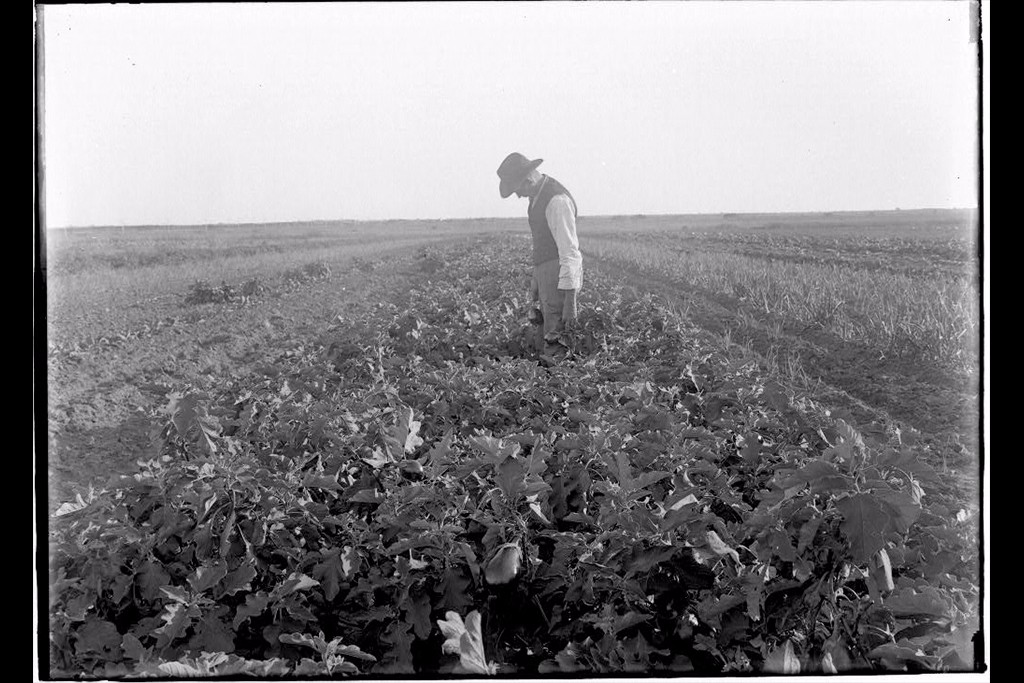Robert Runyon: Texas Photography’s Best-Kept Secret?
By Laura Marina Boria
Reporting Texas
Editor’s note: The images in the above slide show have been reproduced courtesy of the Dolph Briscoe Center for American History and the Library of Congress American Memory project. Reporting Texas Photo Editor Martin do Nascimento selected and ordered the pictures to convey the scope and texture of Robert Runyon’s work in South Texas while maintaining Briscoe Center captions.
The history of Texas photography in the early 20th Century features people who had brief careers in the profession while carrying on markedly varied lives. None was perhaps more varied than that of Robert Runyon, a jack-of-all-trades who became a commercial photographer, acclaimed amateur botanist and, in 1941, mayor of Brownsville.
A self-taught photographer, Runyon documented life on the Texas-Mexico border, most notably the tumultuous events surrounding the Mexican Revolution from 1910 to 1920. Today, Runyon’s work is preserved in the Briscoe Center for American History at the University of Texas at Austin but remains little known outside of Texas.
“He was a naturalist. … He was fascinated by what was going on around him and trying to make some record of it,” said Roy Flukinger, curator of photography at UT’s Harry Ransom Center. “You have things like old cars, dogs, neighbors, street scenes, those things he came across in daily life and aimed his camera at. Not all people with cameras do that consistently. He did.”
Arriving in Texas from Kentucky in 1909, Runyon opened a photography studio in Brownsville, where he documented daily life in places such as Brownsville and Matamoros, eventually encompassing everything from family portraits and bullfights to casualties of the Mexican Revolution. Runyon was interested in both the mundane and the dramatic, and distributed many of his photographs on postcards.
“It was a period of time that was a rough go. You had to be tough to survive out there, and it’s interesting to see what a photographer would do in those situations,” Flukinger said.
Runyon’s family donated his photo archives to UT-Austin in 1986 and his personal and business papers in the early 2000s. “They knew there would be the institutional support at the university to preserve them and make sure that people saw the negatives,” said Amy Bowman, photo archivist at the Briscoe Center.
Runyon’s archive contains more than 8,000 photographs, but also negatives, postcards, instructional pamphlets on photography and botany, and business files. In 1998, UT’s Briscoe Center organized an online exhibit of Runyon’s postcards of the Lower Rio Grande Valley and Brownsville.
The Wittliff Collections at Texas State University recently exhibited a postcard entitled “An Execution in Mexico,” which is part of the Mexican border-town postcard collection donated by Susan Toomey Frost in 2013.
“We have about 56 images in our collection by him,” said Carla Ellard, photo archivist at the Wittliff Collections. “It captures a lot of the border conflict at the time. I don’t think anyone else was doing that. He was able to photograph both sides, from Matamoros (Mexico) and Brownsville.”
One of Runyon’s most circulated photos features three Texas Rangers mounted on horseback observing on the ground before them the lassoed bodies of men they had shot during the “Bandit Wars” on the border. Yet Runyon’s work offers a rare glimpse of work and leisure along the South Texas border in the early 1900s, as well.
Runyon used commercial dry plates and glass negatives and experimented with roll film. “That’s probably true of most communities,” Flukinger said. “Photographers who are trying to make a living from photography are going to use the most efficient processes in camera equipment that were available at the time.”
Runyon used view cameras as well as panoramic view cameras, including Korona, Cirkut, Seneca and Century studio cameras. Most of this equipment weighed from 7 to 13 pounds and had to be assembled and disassembled with each use.
Flukinger added that Runyon wasn’t a significant art photographer. “He used it mainly for commercial purposes and in the process made some interesting documentary work that exists of a place and a time that few other photographers were documenting,” he said.
Runyon was truly a man for most seasons. “The border conflict is of course really interesting, but he was also interested in botany. We have not just the negatives he took, which include the images of the plants. He also donated his arboretum, plant samples that he pressed on paper,” Bowman said.
Although not all Runyon’s photography was technically excellent, he was devoted to depicting his part of Texas. “He continued practicing devotion for that decade he was photographing,” Flukinger said. “That’s important probably because of its naturalness. There’s ease about the work, which I find fascinating.”

